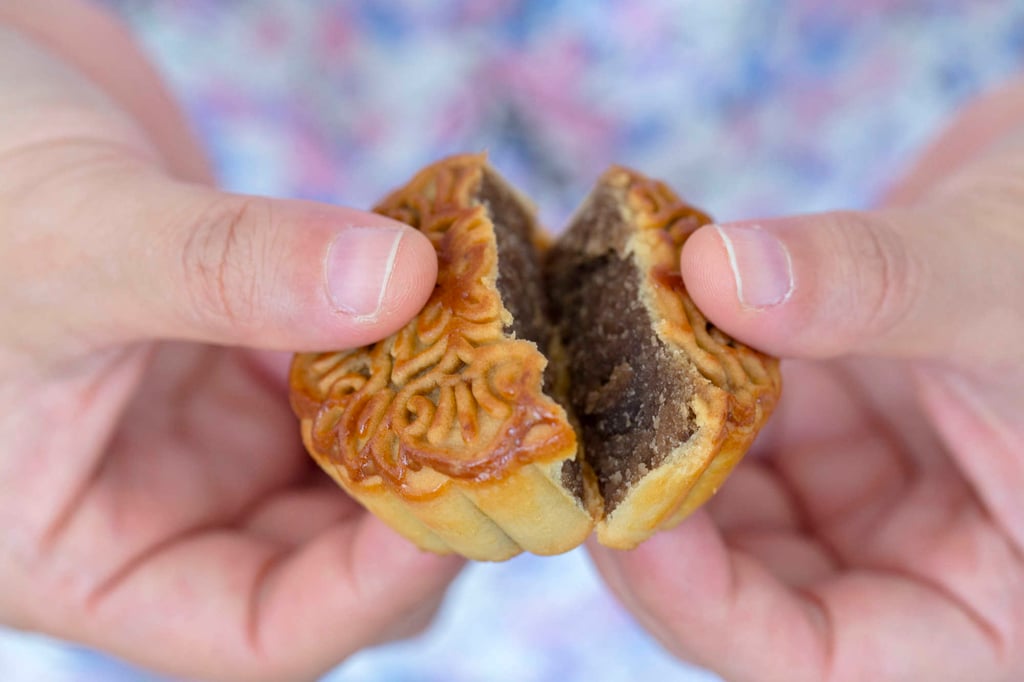
Giving mooncakes at Mid-Autumn a recent trend in China’s long history, first described in the 16th century
- While mooncakes have been made in China for 1,500 years, it is only in the past 500 that they were associated with Mid-Autumn, ancient texts show
- And a favourite myth about 14th century soldiers concealing battle instructions in mooncakes may have been created by Nationalists in the 20th century
It is that time of the year again, when we are inundated by more mooncakes than we need or want.
I have to confess that as confectioneries go, mooncakes are not my favourite things. Every year, most of the sweetmeats boxed in elaborate and wasteful packaging that I receive from various people, companies and organisations end up in the rubbish bin.
Other regional varieties, with their different crusts and fillings, include those from the Chaozhou (or Chiu Chow) region of southeast China, the Yangtze River Delta, northern China, and so on.

Mooncakes are so closely associated with Mid-Autumn that the festival is known in English as the Mooncake Festival in some places. However, this connection was in fact established quite late in China’s history.
A variety of “mooncakes”, pastries whose round shapes were reminiscent of the full moon, are mentioned in writings dating back to the Tang (618–907) and Song (960–1279) periods, but there are no indications that they were special festive foods eaten during Mid-Autumn.
A Song-period book that describes the city of Linan (modern-day Hangzhou) categorised mooncakes with several other pastries as “snacks found in the markets and available in the four seasons”.
Other writings from the Song period that describe the festive foods of Mid-Autumn list fruit, alcoholic beverages and a kind of soup, but make no mention of cakes, moon-shaped or otherwise.
It was only in the Ming dynasty (1368–1644), China’s penultimate imperial dynasty, that multiple historical texts are explicit in identifying mooncakes as a special festive food eaten and exchanged as gifts during the Mid-Autumn Festival. Considering how far Chinese history stretches back, this custom isn’t all that ancient.
It is written in A Travelogue of the West Lake, a book completed in the 16th century, that “the 15th day of the eighth month is the Mid-Autumn. On this day, the people exchange mooncakes as gifts to symbolise reunions.”
Another book, completed in 1593, describes the households of both the elite and commoner classes making pastries on the eighth month to exchange as gifts.
“Of varying sizes, they are called mooncakes. In the markets, they are stuffed with fillings of fruits and nuts. With fancy names and unusual shapes, there are some that cost several hundred coins each.”
There’s a very popular story about how mooncakes were used as tools of subversion by Han Chinese rebels against their Mongol rulers at the end of the Yuan dynasty (1279-1368). According to the story, the secret message, “Kill the Tatars on the 15th day of the eighth month”, was stuffed in mooncakes that were exchanged among the rebels.

The story is probably apocryphal because it first appeared in print only at the end of the Qing dynasty (1644–1912), around 500 years after the rebellion against the Mongols.
Nationalist Han Chinese who wanted to overthrow the Manchu rulers of the Qing dynasty at the turn of the 20th century might have cooked up the story, where the Mongols or Tatars of five centuries before were used an oblique reference to the Manchus of their time.
Whether it is the myth of messages in mooncakes, the eating of mooncakes during the Mid-Autumn Festival, or indeed the very form and flavours of the mooncakes, there is more to it than what most of us accept as fact. But this is true for most customs and traditions, isn’t it?

